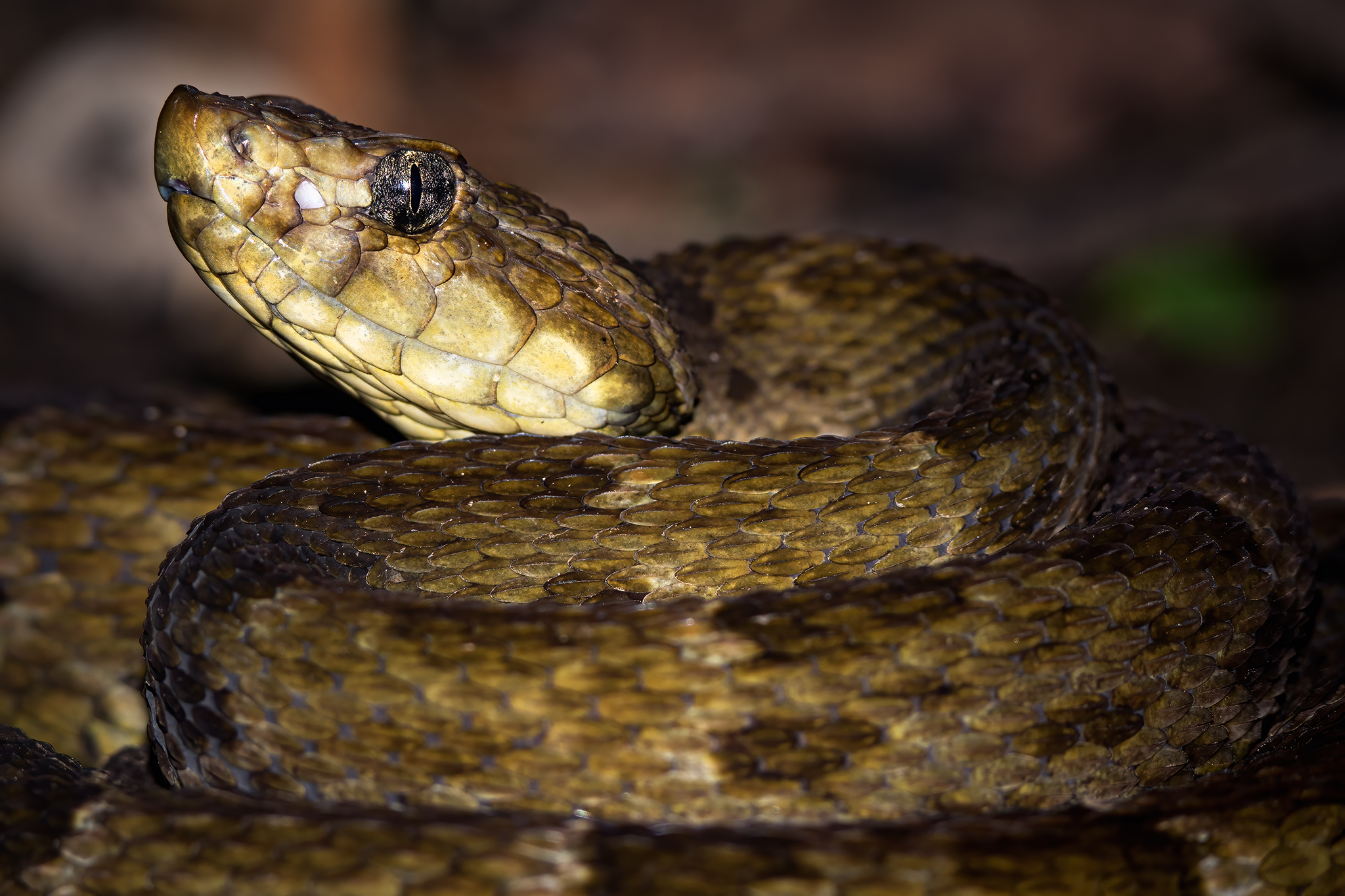Look, but don’t touch…
This stunning creature is the infamous Common Lancehead (Bothrops atrox), one of Latin America’s most powerful and potentially dangerous snakes.
In healthy forests, these lanceheads are rarely encountered, and the chances of being bitten are extremely low. However, in manmade monocultural environments such as coffee and banana plantations, human encounters with these snakes are increasingly common.
The abundance of small rodents in such habitats is a key attractor for lanceheads and other vipers, and agricultural workers are often bitten by these defensive and highly camouflaged snakes.
Lanceheads are extremely venomous, and their bites can be fatal if antivenom is not administered quickly. Their hemotoxic venom inhibits coagulation in the blood, preventing clotting and leading to a variety of systemic complications. Death can result from stroke, kidney failure, or sepsis as a result of necrosis.
However, in the vast majority of cases, recovery from lancehead bites is rapid with appropriate treatment. One study in the Brazilian Amazon observed a lethality rate of only 0.6%, with deaths primarily occurring in elderly patients who were more than six hours from medical attention. In fact, if you’re really lucky, the snake may even leave you with a ‘dry bite’ – a warning bite that lacks any venom at all.
Lanceheads and other vipers should be treated with respect, not fear, and one of the best ways to reduce the chances of being bitten is by fostering more biodiverse habitats – even in agricultural settings.
–
Common Lancehead (Bothrops atrox), Manu Biological Station, Peru


